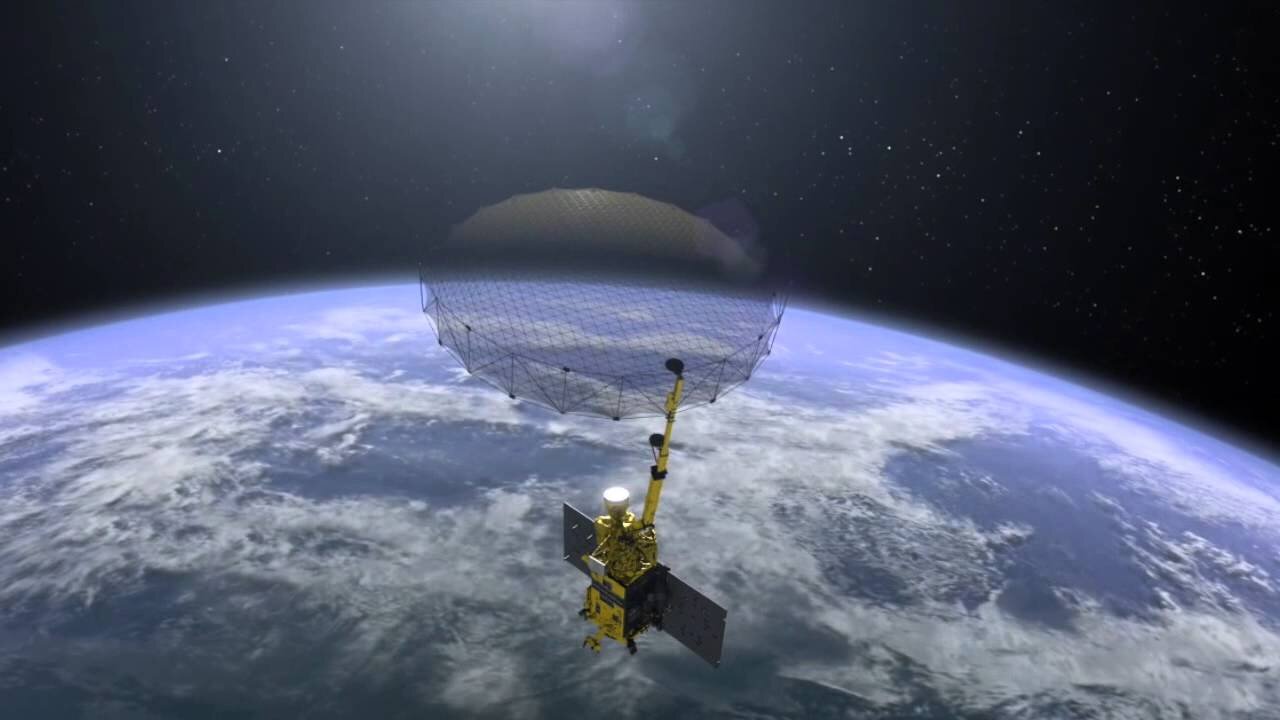Premium Only Content

SMAP At Work - NASA's Soil Moisture Active Passive Satellite
The Alaska Satellite Facility is part of the University of Alaska Fairbanks.
---------------------------
NASA's SMAP satellite will measure global soil moisture every three days for three years--including soil's freeze-thaw state. These measurements will be used to:
1) further understanding of processes that link the water, energy, and carbon cycles;
2) enhance weather and climate prediction models;
3) quantify net carbon flux in boreal landscapes; and
4) develop improved flood-prediction and drought-monitoring capabilities.
Observatory: The SMAP spacecraft features an instrument suite deployed by an expendable launch vehicle into a 680-km, near-polar, sun-synchronous orbit, with equator crossings at 6 a.m. and 6 p.m. local time. SMAP provides global coverage within three days at the equator and two days at boreal latitudes.
Instrument: The instrument includes a radiometer and a synthetic aperture radar (SAR), operating at L-band (1.20-1.41 GHz), that measure surface emission and backscatter, sensing soil conditions through moderate vegetation cover.
Operations: SMAP science measurements will be acquired for three years. A comprehensive validation program will be carried out after launch to assess the accuracies of soil-moisture and freeze-thaw estimates. Data products from the SMAP mission will be made available through the Alaska Satellite Facility DAAC and the NSIDC DAAC.
CREDITS
Produced by the Alaska Satellite Facility SAR DAAC
In cooperation with NASA / JPL
Additional material courtesy of Lucas A. Jones, John S. Kimball, Joseph Glassy (University of Montana); National Snow and Ice Data Center DAAC (NSIDC); Earth Science and Remote Sensing Unit, NASA Johnson Space Center; International Geosphere-Biosphere Programme; Globaia; UN Foundation; Ubaldo Fernandez;
-
 57:22
57:22
barstoolsports
12 hours agoHardest Puzzle Breaks Brains | Surviving Barstool S4 Ep. 8
169K6 -
 9:02:15
9:02:15
Dr Disrespect
15 hours ago🔴LIVE - DR DISRESPECT - MARVEL RIVALS - RANKED
328K56 -
 1:00:46
1:00:46
The StoneZONE with Roger Stone
7 hours agoFake News Attack on Tulsi Gabbard! | The StoneZONE w/ Roger Stone
45.5K17 -
 2:24:08
2:24:08
WeAreChange
9 hours agoElon Musk & Donald Trump: The Emergency Halt That Saved Us
73.9K58 -
 1:13:11
1:13:11
Flyover Conservatives
1 day agoWARNING! Is Bitcoin CIA-Controlled? – The Shocking Reality of Digital Assets - Clay Clark | FOC Show
30.5K7 -
 2:00:37
2:00:37
Space Ice
12 hours agoSpace Ice & Redeye Try To Figure Out Seagal's Most Incoherent Movie
111K2 -
 1:00:36
1:00:36
PMG
1 day ago $9.55 earned"Santa Trump is Giving Us Hope - But Will Johnson Stand Strong?"
89.3K14 -
 54:30
54:30
LFA TV
1 day agoThe German Strongman’s Arrival Is Imminent | Trumpet Daily 12.18.24 7PM EST
68K4 -
 2:04:11
2:04:11
Melonie Mac
10 hours agoGo Boom Live Ep 32! Soul Reaver Remastered!
56.1K10 -
 39:11
39:11
Sarah Westall
8 hours agoDigital Slavery and Playing with Fire: Money, Banking, and the Federal Reserve w/ Tom DiLorenzo
65.6K8